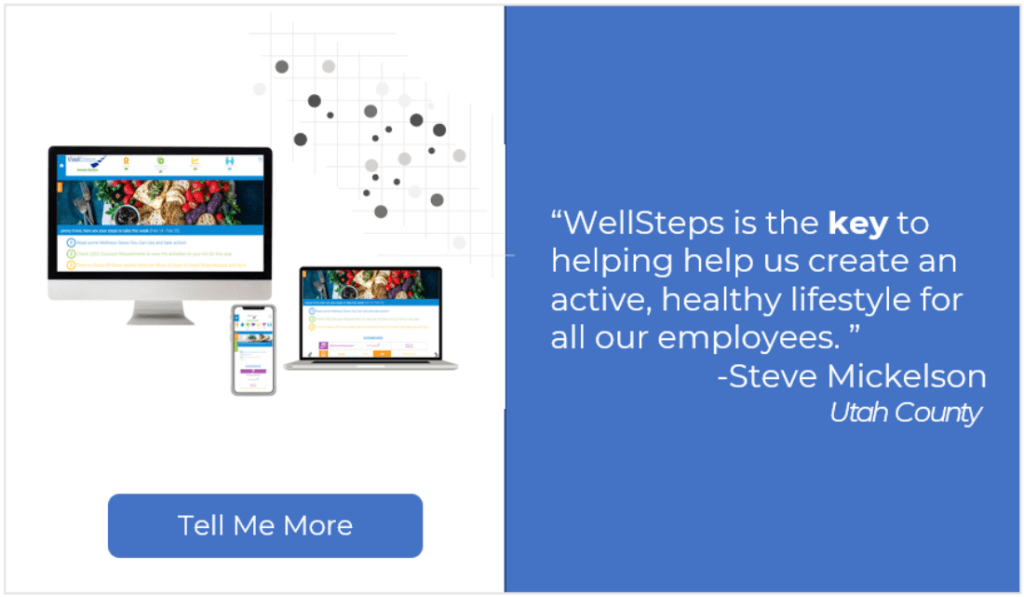Attracting the right people to your organization is just one aspect of building a solid workforce. Ensuring they remain with the company is another challenge altogether. To foster and maintain employee loyalty, companies need to implement well-designed retention strategies.
Without these strategies, initial enthusiasm may quickly fade. Employee dissatisfaction can take hold, leading to widespread attrition.
Problems of High Employee Turnover
Companies experiencing high turnover rates should recognize it as a warning sign indicating problems with their employee management practices. While some individuals may leave at the first sign of discomfort, a significant number of departures suggests a need to reevaluate your employee relations and retention initiatives.
Losing key team members is both costly and disruptive. When top talent exits, it can disturb the company’s operations. Even worse, when they join a competitor, they strengthen the competition while leaving a gap in your team, thereby weakening your position. Frequent departures can harm the company in ways beyond just the expense of hiring and training new employees.
Typically, satisfied employees don’t leave without a compelling reason. According to the Harvard Business Review, common reasons include disliking their boss, limited growth opportunities, and better offers from other companies.

While you cannot control people’s decisions, you can give your employees good reasons to stay.
While you cannot control people’s decisions, you can give your employees good reasons to stay. Implementing effective employee retention strategies fosters strong relationships and helps you retain your most valuable assets: your employees.
In this article, we will explore the best employee retention strategies to secure your talent’s loyalty.
RELATED: How Wellness Programs Help Improve Employee Morale
Employee Retention Strategies Include Promoting Employee Wellness
When your employees work hard at the expense of their health, their bodies will force them to quit. Promoting employee wellness goes beyond providing them with health insurance and free medication. It entails encouraging a wellness lifestyle even at work.
According to a study, 45% of Americans are more willing to stay in their jobs when their companies sponsor wellness support programs. Simple ways to promote health and wellness in the workplace include:
- providing wellness information materials
- making healthy meals available in the cafeteria
- consider having an on-site fitness center
- facilitate sports and fitness clubs and activities
- smoking cessation programs
- weight management programs
- team walks, etc.
RELATED: 16 Staff Wellness Activities for Creating a Healthier Workplace
Recognize Employee’s Contributions
This isn’t about inflating egos but about showing genuine appreciation for your employees’ contributions to the company’s success. Employees who consistently demonstrate dedication and deliver results deserve recognition and should be highlighted as exemplary. Acknowledging your team’s efforts sends a powerful message that their hard work is valued.

However, this doesn’t mean lowering your standards by rewarding merely adequate work. Managers should develop strategies to identify employees who go above and beyond in achieving goals, even when not under direct supervision.
Recognition can come in the form of:
- cash incentives
- salary increases
- tokens or certificates of appreciation
- gift packs
- freebies like company swag
- company shares.
It’s beneficial to offer a variety of rewards, as employee needs differ at various life stages. For example, you could give a honeymoon trip to a newlywed employee or an art kit to nurture a deserving employee’s creative interests.
RELATED: 13 Fun Workplace Wellness Challenge Ideas Your Employees Will Enjoy
Promote Employee Growth – Rare But Effective of Employee Retention Strategies
People don’t join a company to remain stagnant in the same role for years. They naturally aspire to evolve, grow, and eventually secure that coveted corner office and prestigious position.
Companies attract top talent by offering career advancement opportunities. If they fail to fulfill this promise, dissatisfied employees will start exploring LinkedIn and talking to headhunters to find new opportunities.
Some may linger a bit longer, hoping for improvement. However, if career progression remains elusive, they won’t hesitate to leave when a better offer arises. It’s hard to blame them for that. Even the most loyal employees will consider other job options if they feel stuck in a dead-end position.
It’s wise to develop strong employee retention strategies and foster growth by helping employees enhance their knowledge and skills. By expanding their roles and exposure in the workplace, you can unlock their full potential.
By giving employees a space to grow and thrive, you help them become the best version of themselves. When they get that kind of support, they recognize that they are in the right place.
Additionally, you can provide them with mentors and training opportunities. By giving them venues to showcase their skills, you can motivate them to move forward and evolve.
By giving employees a space to grow and thrive, you help them become the best version of themselves. When they get that kind of support, they recognize that they are in the right place.
Encourage Communication In the Workplace
Bright ideas only make a significant impact when they are communicated and executed. Companies should encourage employees to share their insights, suggestions, and feedback, especially concerning goals, policies, and practices.
Everyone has the potential to contribute transformative ideas that can overcome challenges and drive company growth. Open communication ensures a healthy and unrestricted flow of information and expertise within the workplace. It fosters creativity and inspires innovation. Cultivating such a culture also creates a dynamic, inclusive, diverse, and progressive environment, rather than an echo chamber.
Open communication also allows for a healthy and unhampered flow of information and acumen in the workplace.
It’s also a good way to gauge how your employees feel about their work, satisfaction level, issues and concerns, goals and aspirations, and what makes them tick. This allows the management to get to know their employees better and address their needs in a more personalized way.

Having a voice in the company empowers employees and enhances their confidence to speak their minds and initiate projects. It keeps them engaged in the company, and this deepens their roots as they become more invested in the organization’s goals and vision. They become active participants, not mere spectators on the sidelines.
RELATED: How to Create Company Wellness Programs For Millennials in 5 Simple Steps
Provide Career Advancement Opportunities
Employees who are nurtured by their company develop a strong affinity for their employers. By investing in their growth and coming up with good employee retention strategies, you can reap the benefits of their acquired expertise and deepened loyalty. When you provide them with realistic, attainable career goals, they see their way forward more clearly instead of just wishing for a promotion that may or may not meet their time frame and expectations.
Offering your employees advancement programs such as free training, scholarships for further studies, apprenticeships, and opportunities for expanding their roles can give them a real sense of growth within the company.
You can encourage your staff to pursue advanced courses relevant to their career path. To make continuing education more feasible, you can provide support through subsidies and flexible work hours to accommodate their schedule.
Furthermore, you may also design a strategic succession plan where high-potential employees can be assigned roles and be included in traineeship programs for future leaders. With a long-term objective like this, you can keep your employees entrenched in their journey with the company.
RELATED: Wellness Company: Why Every Company Must Become One Now
Provide Competitive Compensation
Financial security is one of the reasons employees want to keep their job. Many of them work because the alternative is less appealing—going broke. Competitive compensation is a real and robust motivation because there are always bills to pay, mortgage dues to meet, families to feed, emergency funds to keep, and retirement funds to secure.
When employees fail to find a satisfying level of monetary compensation in the company, they begin to worry about their future. Simply surviving from paycheck to paycheck with no breathing room for savings or investments can cause dissatisfaction among employees.

No matter how good and stable a job is, if the employee feels underpaid and financially insecure, they might feel the need to look for a better-paying job.
No matter how good and stable a job is, if the employee feels underpaid and financially insecure, they might feel the need to look for a better-paying job.
That sleek-looking award or gift check for being employee of the month would not suffice to financially provide for their long-term needs and aspirations. It is not simply about money per se, either. It is also about being valued enough to be awarded a hefty salary that makes people decide whether to stay in a company or look for a more rewarding career elsewhere.
RELATED: The Costs and Advantages of an Employee Wellness Program
Prioritize Work-Life Balance – A Key to Employee Retention Strategies
Work-life balance has become a buzzword in the workplace and is associated with self-care and other wellness concepts. It essentially means creating a sustainable way to work while maintaining a healthy personal and social life.
It is common for employees to be subjected to pressure and stress in the workplace. However, having a constantly unhealthy work atmosphere is counterproductive. Work quality and employee satisfaction dip, and the attrition rate rises.
Even the most competitive employees could reach a tipping point and quit when there is an extreme lack of balance between their work and wellbeing. Companies can promote work-life balance through facilitating employee retention strategies like:
- relaxation activities
- social activities
- wellness programs
- lifestyle coaching
These can help soften the rough edges of the daily grind and enable employees to work in a healthy, productive, and more meaningful way.
RELATED: 10 Tips to Implement Mindfulness in the Workplace
Provide a Safe Working Environment
Employees who do not feel safe in the workplace will be bent on finding a safer place for employment. People find it hard to flourish and confidently go about their tasks when they are constantly worried about their safety.
It is vital to have safety protocols and stay in compliance with Occupation Safety and Health Administration (OSHA) standards to manage employee health and safety in the workplace at all times.
Minimizing injury risks, health risks, and potential safety threats in business premises is mainly the responsibility of the company. Failing to do this could cause you to lose your people because of worry, sickness, or disability.
Prioritizing employee safety alleviates their concerns, provides them with a sense of security, and helps keep them in your team.

Incentivize Loyalty
The job market is highly competitive, and attracting top talent and ensuring they stay requires effort. If your employees remain with your company despite its flaws and better offers elsewhere, they deserve to be rewarded.
Rewards provide more than just perks; they convey a strong message of appreciation and help foster a culture of commitment and loyalty.
One of the most effective employee retention strategies is incentivizing loyalty through salary increases, benefits upgrades, and bonuses. When employees have rewards to look forward to upon reaching certain milestones, they are more likely to stay, anticipating their benefits and taking pride in their long tenure.
Encourage Employee Engagement
Employee engagement is the degree of your employees’ enthusiasm and involvement in the company. Your employee retention strategies will not be as effective if your employees are not actively participating.
The key is to make your programs and activities worth their while. They must add value to their lives and provide exclusive benefits not easily available outside the company.
A positive workplace culture is one where people feel connected and part of the team. Encouraging employee engagement is the responsibility of managers. They can provide support to their workforce and help them see how their roles connect with the rest of the company through coaching and conversations. When it comes to work, it’s easier to manage a team that does not feel remote, no matter the setup.
Encouraging employee engagement is the responsibility of managers.
So, how do you engage your employees more? You can start by encouraging regular feedback and communication. Managers can also provide assistance and mentoring, especially in areas where an employee is struggling.
Ongoing conversations make employees feel less detached and isolated and encourage them to participate more. Remember: more engagement, less exit.
RELATED: How to Get Maximum Wellness Program Engagement: The Complete Guide
Provide Flexible Work Arrangements – A Favorite of All Employee Retention Strategies
Employees don’t all operate the same way. Some work best in the morning, while others find their energy peaking at a later time. Meanwhile, employees with kids often have their hands full in the morning while those who pursue further studies may need to finish work early in time for their night classes.

When employees don’t have the freedom to work the best way they can, they may feel less motivated to work and stay in the company. A stiff work setup can cause them to perform less optimally because they are distracted or feel less energetic.
Win-win solutions include:
- flexible work hours
- part-time setups
- telecommuting
- compressed workweeks
- gradual retirement schemes
Employee retention strategies like this must suit and meet employee needs by providing some room for variability in less rigid structures.
RELATED: 6 Strategies for Successful Wellness with Remote Workers
Foster Respect in the Workplace
Relationships, whether personal or professional, thrive on mutual respect. There should be civility in the workplace, even if conflicts and disagreements are inevitable. Contempt and rudeness must not be tolerated and professionalism must be practiced.
Regardless of rank, gender, economic status, age, or race, all employees must be treated with respect and decorum. Otherwise, disrespect can breed animosity, and a stressful work environment can turn off employees.
Managers can foster respect by example, instill company values among employees, and emphasize it in the company manual. The company can provide counseling to employees with anger management problems and to those traumatized by a negative experience in the workplace.
Final Thoughts on Employee Retention Strategies
Relationships with your employees are nurtured through genuine care. Employee retention strategies must stem and grow from this premise. Anything less could come off as superficial and self-serving, and may not be sustainable and successful down the road.
When employees see and feel that they are cared for by the company, it generates a sense of commitment and loyalty in their minds and hearts. Whether this seed grows depends on how the company continually nurtures it.
Employee retention strategies that are developed and implemented properly build a strong team, reinforce growth, and foster an enduring company journey where no one wants to stray and everyone feels happy to stay.
All of these strategies can be implemented with the best wellness program suited for your company. Our team is happy to give you a free demo of what that would look like. We invite you to discover what your options are and help you along the way.
